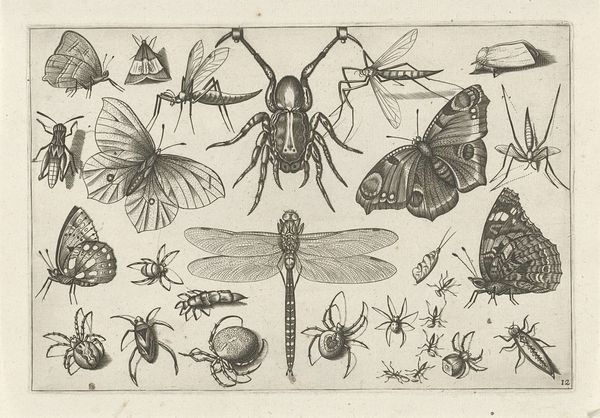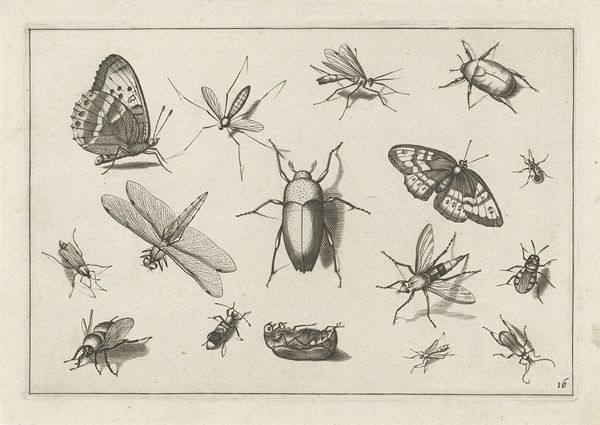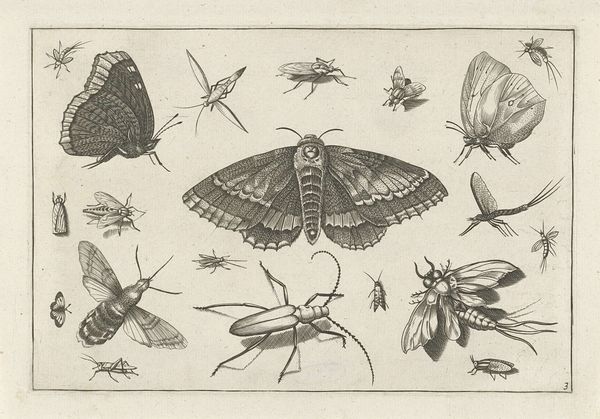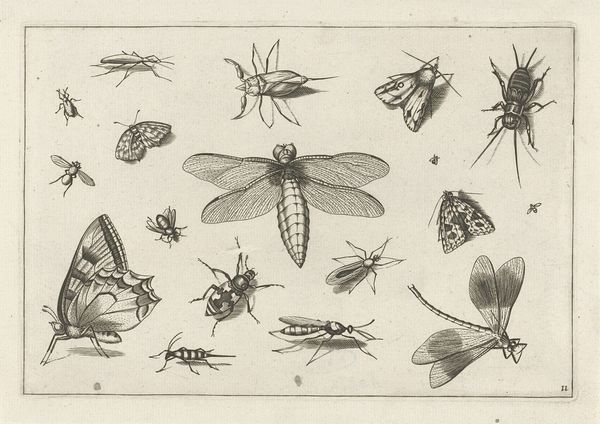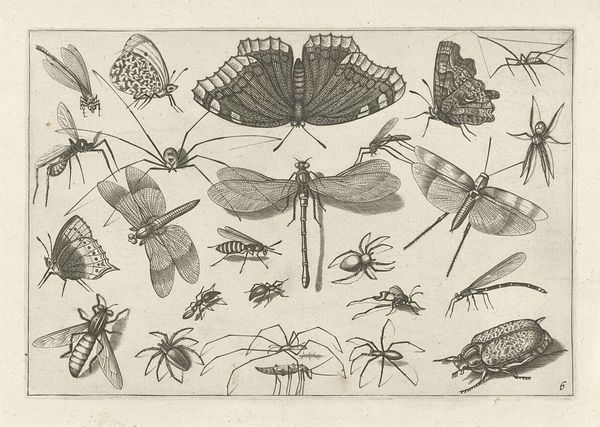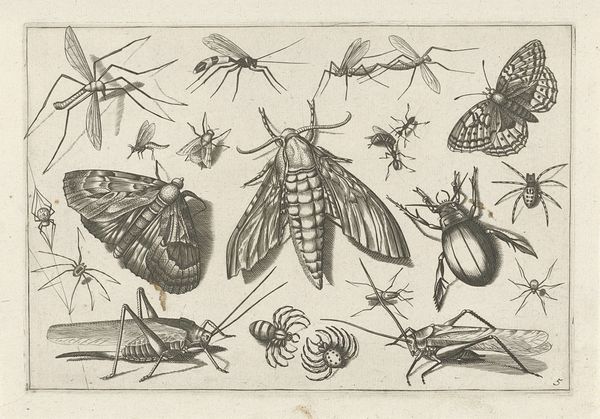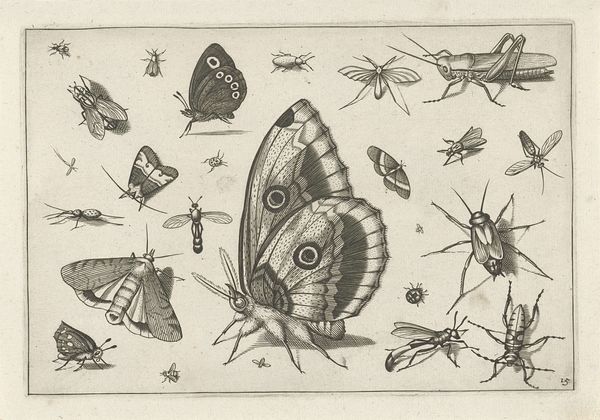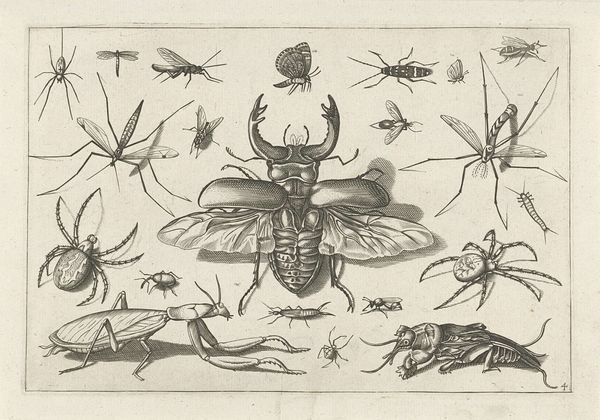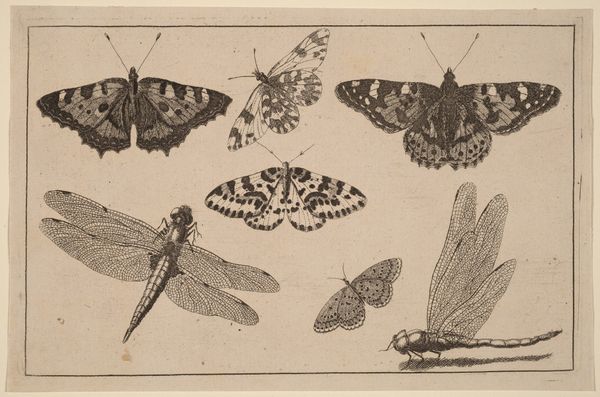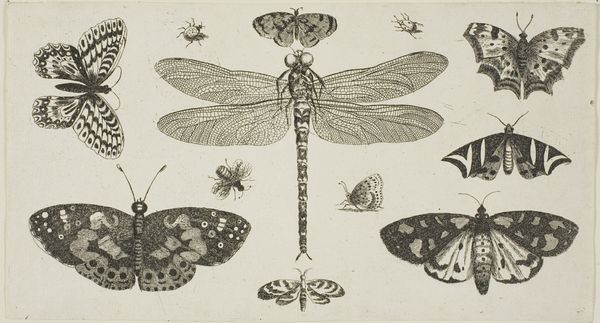
drawing, print, engraving
#
drawing
#
baroque
# print
#
engraving
Dimensions: height 134 mm, width 199 mm
Copyright: Rijks Museum: Open Domain
Curator: Here we have “Insects,” an engraving and drawing created around 1630 by Jacob Hoefnagel. Editor: My first thought is, look at this collection! It feels almost taxonomic, in the style of representing nature. The attention to the wings of these insects is particularly impressive. Curator: Indeed. Hoefnagel's approach highlights a pivotal shift in natural science. This was an era where the burgeoning scientific revolution sought new systems for understanding and categorizing the world, impacting art significantly. Hoefnagel was actually commissioned by Emperor Rudolf II to contribute to a multivolume series on the natural world. Editor: So you're saying this wasn’t purely aesthetic? Curator: It certainly existed within that paradigm. Consider that illustrated bestiaries and herbals had traditionally functioned within religious and symbolic frameworks. However, this artwork demonstrates a move toward empirical observation, emphasizing detailed accuracy for scientific documentation. The piece almost performs as visual epistemology of nature. Editor: From a structural perspective, the artist balances variety with symmetry. The larger dragonfly and the mirrored placement of the butterflies create a visual anchor, allowing for the detailed examination of the surrounding smaller insects. The use of engraving really enhances that precision. Curator: Absolutely, and within the social framework, these images spoke to broader themes of colonization. Think of these scientific studies allowing the Europeans to familiarize themselves with flora and fauna from afar, a preparation for colonization projects. Also remember the status these kind of illustrated encyclopedias would bring their patrons. Editor: Thinking purely aesthetically then, the visual harmony created by these formal choices turns what could have been simply a scientific document into something more. It’s interesting how those details of line and form almost give equal weight to scientific study and decorative pattern making. Curator: So there’s the potential in regarding these pieces as a sign of colonial ambitions while seeing a deep knowledge of form being deployed through Hoefnagel’s illustrative style. Food for thought, I think. Editor: Indeed! A fascinating nexus of art and science, expertly rendered!
Comments
No comments
Be the first to comment and join the conversation on the ultimate creative platform.
